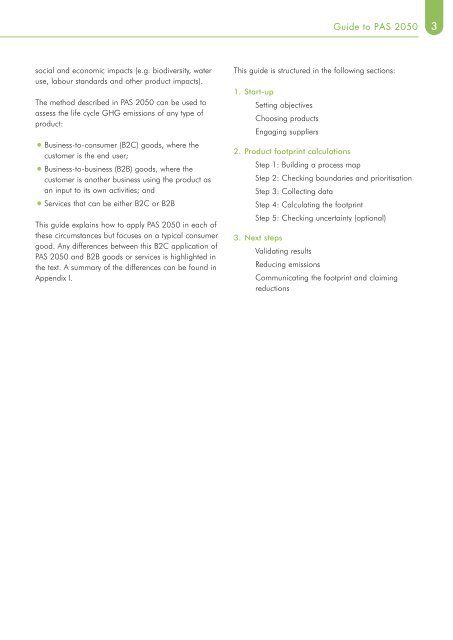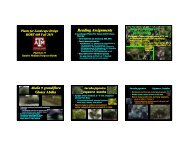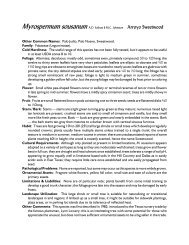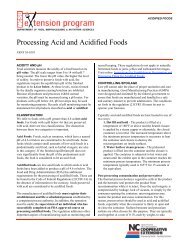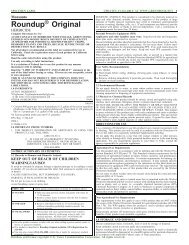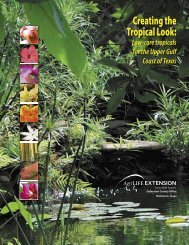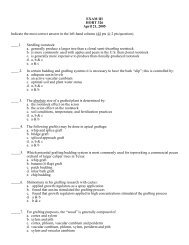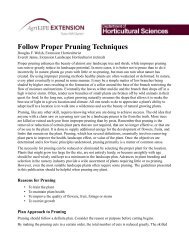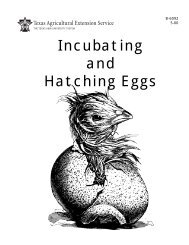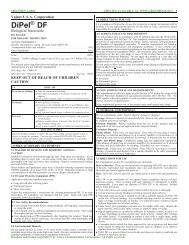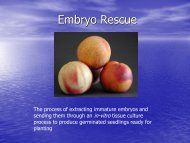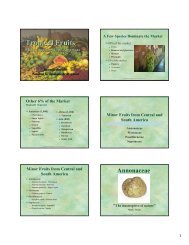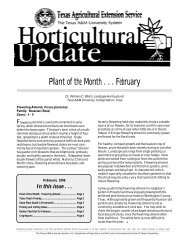Guide to PAS 2050 How to assess the carbon ... - Aggie Horticulture
Guide to PAS 2050 How to assess the carbon ... - Aggie Horticulture
Guide to PAS 2050 How to assess the carbon ... - Aggie Horticulture
Create successful ePaper yourself
Turn your PDF publications into a flip-book with our unique Google optimized e-Paper software.
<strong>Guide</strong> <strong>to</strong> <strong>PAS</strong> <strong>2050</strong> 3<br />
social and economic impacts (e.g. biodiversity, water<br />
use, labour standards and o<strong>the</strong>r product impacts).<br />
The method described in <strong>PAS</strong> <strong>2050</strong> can be used <strong>to</strong><br />
<strong>assess</strong> <strong>the</strong> life cycle GHG emissions of any type of<br />
product:<br />
• Business-<strong>to</strong>-consumer (B2C) goods, where <strong>the</strong><br />
cus<strong>to</strong>mer is <strong>the</strong> end user;<br />
• Business-<strong>to</strong>-business (B2B) goods, where <strong>the</strong><br />
cus<strong>to</strong>mer is ano<strong>the</strong>r business using <strong>the</strong> product as<br />
an input <strong>to</strong> its own activities; and<br />
• Services that can be ei<strong>the</strong>r B2C or B2B<br />
This guide explains how <strong>to</strong> apply <strong>PAS</strong> <strong>2050</strong> in each of<br />
<strong>the</strong>se circumstances but focuses on a typical consumer<br />
good. Any differences between this B2C application of<br />
<strong>PAS</strong> <strong>2050</strong> and B2B goods or services is highlighted in<br />
<strong>the</strong> text. A summary of <strong>the</strong> differences can be found in<br />
Appendix I.<br />
This guide is structured in <strong>the</strong> following sections:<br />
1. Start-up<br />
Setting objectives<br />
Choosing products<br />
Engaging suppliers<br />
2. Product footprint calculations<br />
Step 1: Building a process map<br />
Step 2: Checking boundaries and prioritisation<br />
Step 3: Collecting data<br />
Step 4: Calculating <strong>the</strong> footprint<br />
Step 5: Checking uncertainty (optional)<br />
3. Next steps<br />
Validating results<br />
Reducing emissions<br />
Communicating <strong>the</strong> footprint and claiming<br />
reductions


